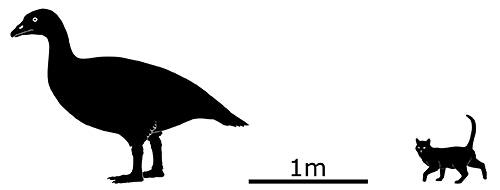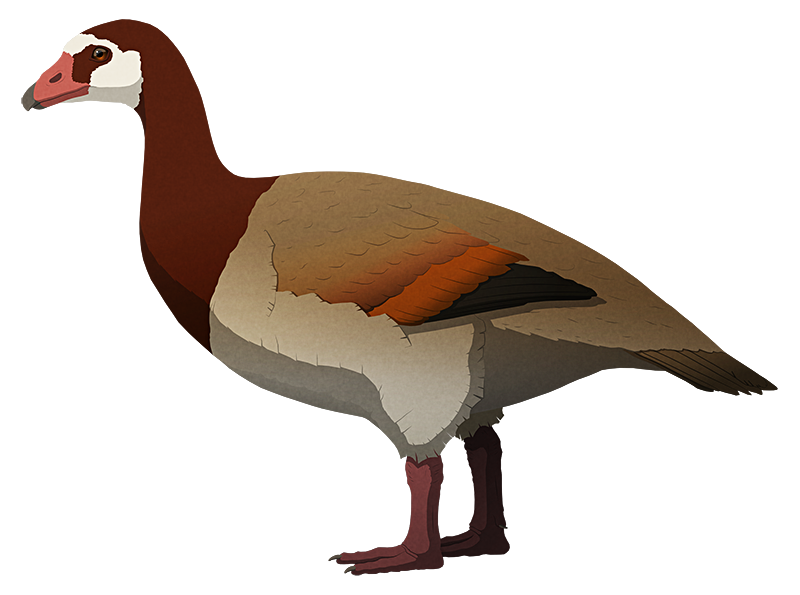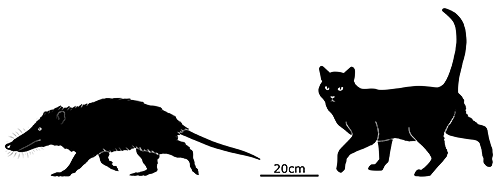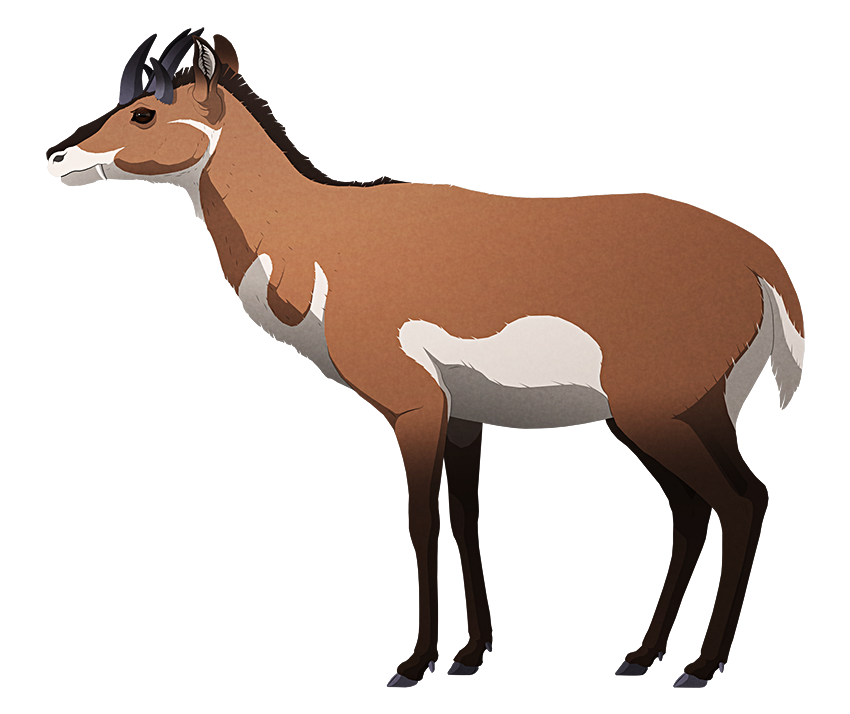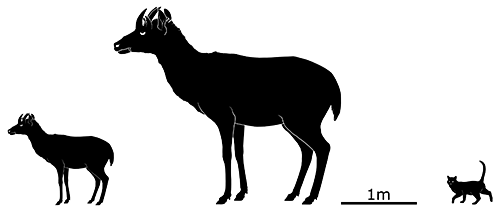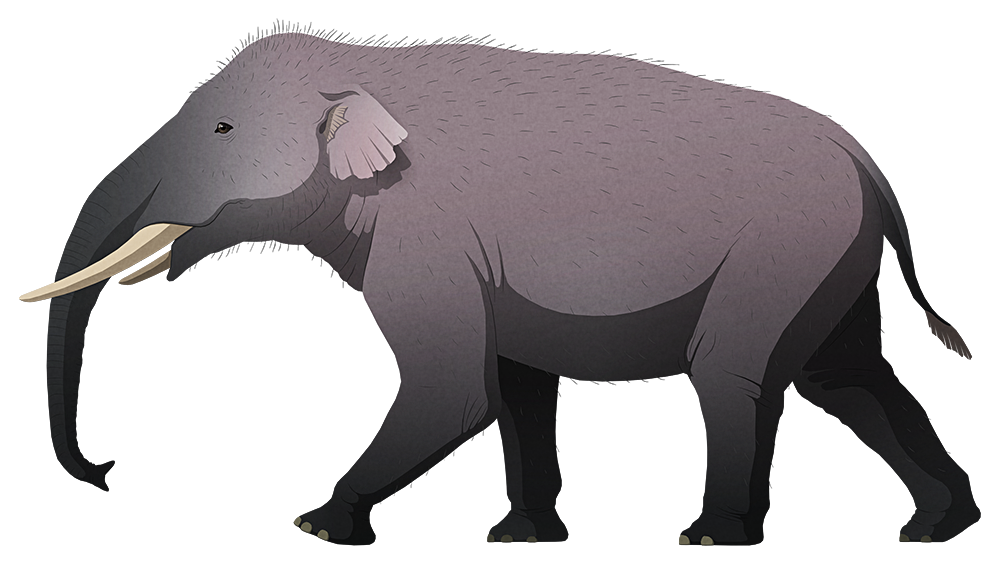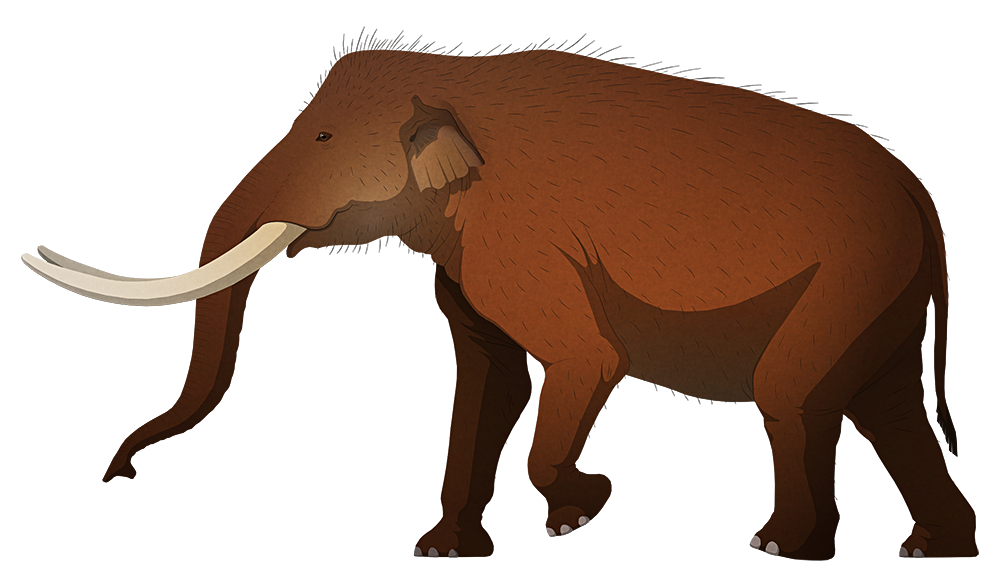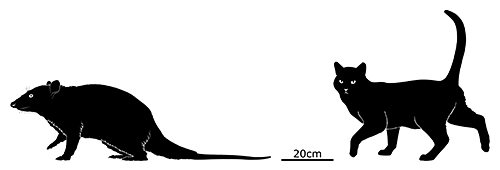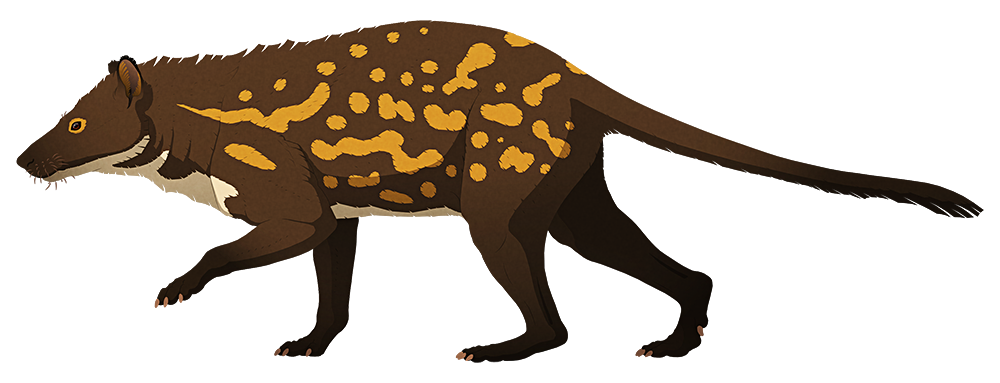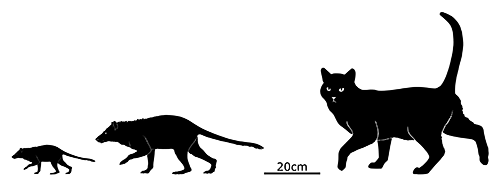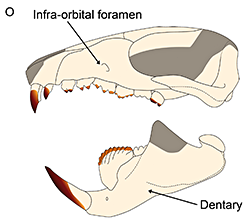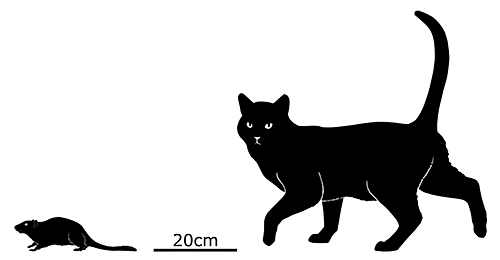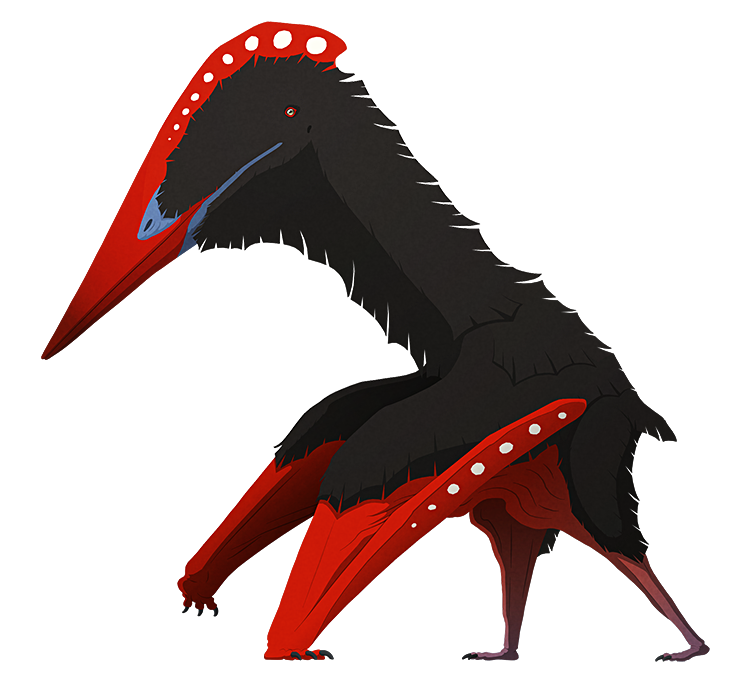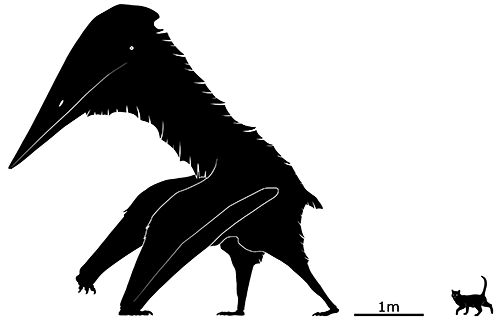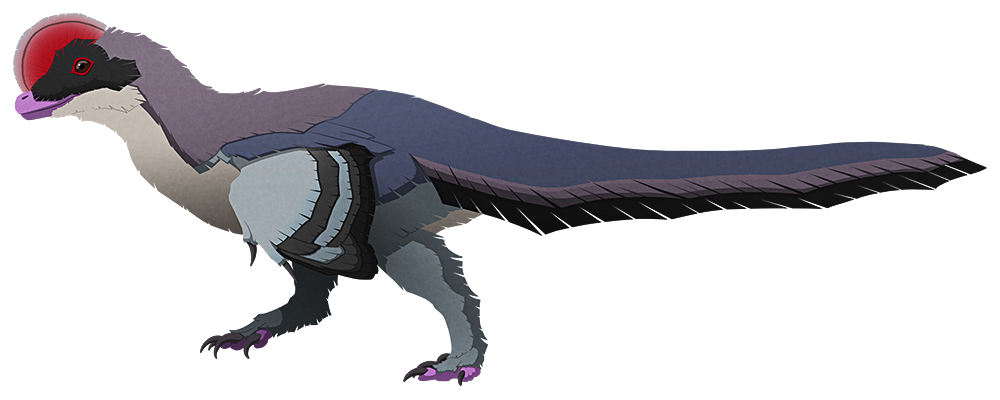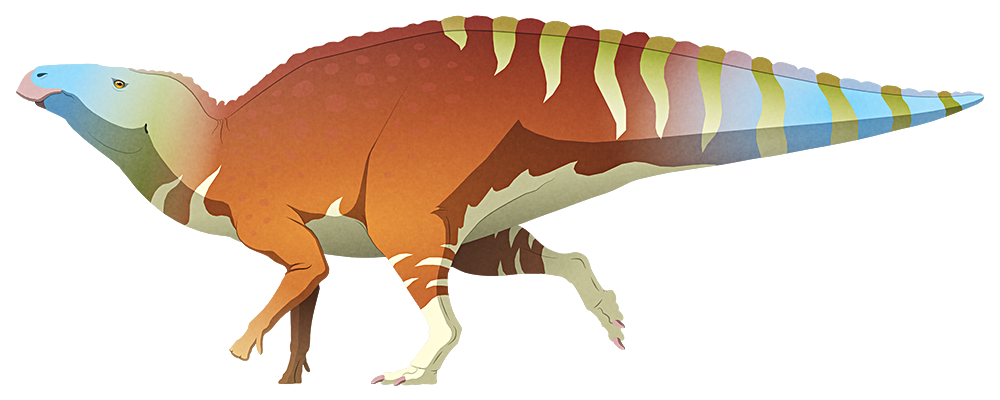While some of the main big herbivores on the Late Miocene Gargano-Scontrone island(s) were the larger species of Hoplitomeryx, they weren’t the only animals filling that ecological niche.
Garganornis was an enormous anatid bird, closely related to modern ducks, geese, and swans. Although only known from fragments of its skeleton it’s estimated to have stood up to 1.5m tall (4′11″), making it the largest known waterfowl to have ever lived.
It probably reached such a size thanks to the lack of large terrestrial predators, and possibly also as protection against the island eagles and owls – literally growing too big for them to be able to eat.
It was flightless, with small wings, and had reduced webbing between its toes, suggesting it spent most of its time walking around on land. It also had bony knobs on its wrists that would have been used to give some extra force to wing-slaps when fighting with each other over territory or mates.
